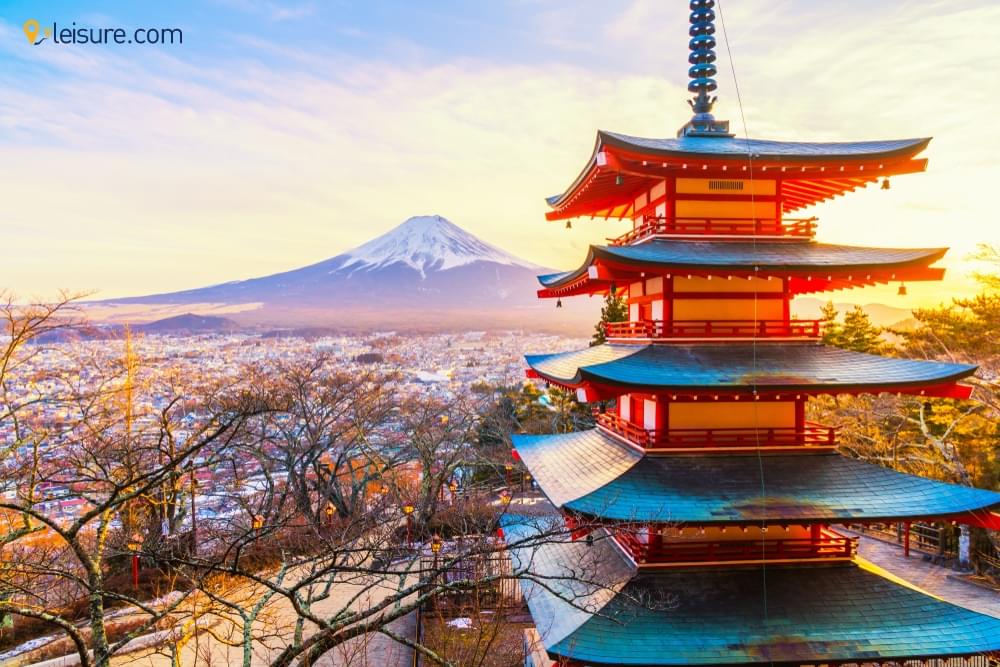Explore the Luxuries of Two Capitals Tokyo and Kyoto in Customized Japan Itinerary








Japan has been at the forefront of the advancement and as of late was granted with the most ground-breaking and powerful International Passport on the planet. In any case, who runs Japan effectively? - The capital urban communities of Tokyo, Kyoto, and Nara. Be that as it may, they are not just the focuses of financial advancement. Over the time, they have filled in as the focuses of most noteworthy building and of the travel industry too. Individuals rush from everywhere throughout the world to see the amazing landmarks and nuance of Japan's capital urban communities.
Tour Highlights:
- Vacation in the resort town of Hakone which is known for its views on the inclines of Mt.Fuji.
- Visiting the Tsukiji Market which is the biggest fish market on the planet.
- Touring the administration corridors of Tokyo and visiting the Supreme Castle and the National Diet which is Japan's House of Representatives.
- Enjoy a half-day voyage through Nara including Daibutsu, home to the world's biggest bronze Buddha remaining more than 52 feet tall
- Visit the excellent manors and estates of Japan's extraordinary shoguns, Japan's antiquated military commandants, including the amazing strongholds and patio nurseries of Nijo Castle
Tour at a Glance:
- Day 1: Arrival in Tokyo and Visiting Tokyo on whatever is left of the day
- Day 2: Visiting Tokyo's Fish Market, National Diet, and Tokyo National Museum
- Day 3: Visit Mt Fuji in Tokyo, Lakes, Towns, and Bathhouses
- Day 4: Nara – Transfer Nara, Japan's Former Capital, for the Hall of the Great Buddha
- Day 5: Kyoto – Traverse the Palaces of Shoguns at Nijo Castle and the "Brilliant Pavilion"
Tour Price
Our private tours typically range from $500 - $1000 per person/per night depending on chosen hotels and room categories, vehicles used, types of tours, flight cost, time of year and other factors. Make an inquiry for a customized trip quote.
Detailed Itinerary
Day 1: Arrival in Tokyo and Visiting Tokyo on whatever remains of the day
On the first day, the visitors will land at the Tokyo International Airport which has flights rolling in from all parts of the world. Your private exchange will welcome you at Narita Airport to take you to your lavish lodging situated in the core of the city. From Narita Airport, the stumble into Tokyo legitimate takes you along the streets and railroads that frame the foundation of this ageless city. When you sink into your rich in room, set aside some opportunity to unwind. You will need to be very much rested for the enamoring encounters that anticipate you in the week ahead.
Day 2: Visiting Tokyo's Fish Market, National Diet, and Tokyo National Museum
On the second day of the excursion, your guide will take you to the Tsukiji Fish Market sell-off where the clamoring smell of fishes would enrapture your day. Positions of "pay men" can be seen hurrying along to work while others are just currently filtering out of an izakaya (Japanese-style bar). It is the biggest fish advertise on the planet and being biggest on the planet, you can see the throbbing exercises that emerge here... Potential purchasers burrow test pieces from the monstrous fish and take careful notes on the freshness and fat substance. At the point when the chime rings, the bartering starts. The barker's verbal course is covered with business language and purchasers to a great extent impart close by signs.
At that point, you will help towards the exhibitions of the administrative exercises when you visit the National Diet which is the House of Representatives of Japan. It is likewise the seat of the Emperor of Japan. Inside the Diet, you likewise visit the assembly of the House of Councilors and a respectful display in the Visitor's Lobby that updates you regarding the history and capacity of Japan's most amazing political body. You would then be able to spend whatever remains of the evening at the Tokyo National Museum which is the nation's most seasoned and most extravagant archive of Asian expressions and ancient rarities. The historical center has formed people in general's comprehension of Japanese legacy since its 1872 commencement. Of the Museum's five displays, you may discover the Gallery of Horyuji Treasures most fascinating on this visit.
Day 3: Visit Mt Fuji in Tokyo, Lakes, Towns, and Bathhouses
On the morning of the third day, do visit the Mt Fuji or Fuji-san as local people love to call it by this name. It is an amazing image of the national personality which additionally includes on the nearby legend of Japan. You land at Station Five, about most of the way up the mountain, without a moment to spare for a Western lunch. You have an opportunity to meander the rough landscape for a bit. As you're at a rise of more than 7,000 feet, you may see strolling around abandons you huffing and a lunch-lager abandons you bleary-eyed. Your next stop will be the good-looking town of Hakone. When a firmly controlled checkpoint in the Edo time, Hakone is presently a prominent resort town. Its onsen (hot springs), fairways, lush lakeshores, and perspectives of Mount Fuji are the ideal characteristic solution for cooped-up city occupants in the midst of a furlough.
Day 4: Nara – Transfer Nara, Japan's Former Capital, for the Hall of the Great Buddha
On the fourth day of the outing, the guests will be exchanged to Nara through the Shinkansen Bullet Train which would take an hour to reach there. It would have taken days to go to Kyoto from Tokyo amid the Meiji time yet the entry of projectile trains has facilitated the transport. As you walk around Gion, you see geisha teahouses. For quite a long time, these have filled in as private quarters in which the geisha offer their novel mechanism of excitement, workmanship, and friendship to discrete people with profound associations and significantly more profound pockets. The far-reaching bequests of the Kyoto Imperial Palace are magnificent for an after lunch leg extend. The patio of uniform white rock that spreads previously the Imperial Throne is sufficiently huge to hold a little-armed force. At that point, an hour south lies Nara, which went before Kyoto as Japan's capital amid the eponymously named Nara Period from (710-794). Stroll to relentless Todaii-Ji — the Buddhist sanctuary complex that was so compelling in its prime that the capital must be moved far from Nara to save the organization of the legislature. Today the popularity of Todai-Ji overshadows that of the city itself, as a result of its worshipped Daibutsu, the Great Buddha statue. Daibutsuden, the lobby in which the Great Buddha lives, was the world's biggest wooden working until the turn of the thousand years, even following a seventeenth-century recreation that lessened its size by a third.
Day 5: Kyoto – Traverse the Palaces of Shoguns at Nijo Castle and the "Brilliant Pavilion"
On the fifth and a day ago of the visit, navigate the royal residences of Shoguns at Nijo Castle. The Nijo Castle was worked in 1603 around the same time when Tokugawa Leyasu had claimed the shogunate and Japan itself. Following visit Kinkaku-Ji, prevalently known as "the Golden Pavilion." Though it has since quite a while ago filled in as a sanctuary, it was previously the retirement house of Ashikaga Yoshimitsu, who originates before Tokugawa Ieyasu as a shogun by two centuries. Kinkaku-Ji mirrors the late shogun's veneration for aestheticism—the whole of the main two stories are plated with gold. The estate was based upon the shores of a huge lake and on a radiant day, the appearance in the water sparkles marvelously.
